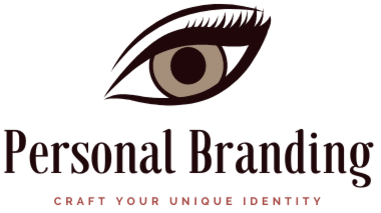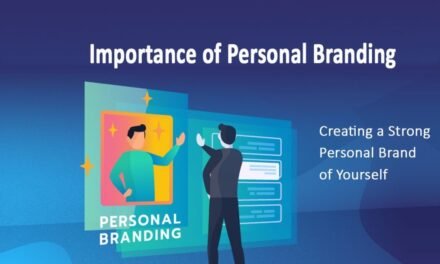Make Content for Your Personal Branding: A Guide to Standing Out
In today’s digital age, personal branding has become an essential strategy for anyone looking to build a name for themselves, whether you’re an entrepreneur, freelancer, job seeker, or influencer. One of the most powerful ways to develop and communicate your personal brand is through content creation. The content you share reflects your values, expertise, personality, and vision. It acts as a bridge between you and your audience, helping you build trust, engage with followers, and establish authority in your field.
But what does it mean to “make content” for your personal brand? And more importantly, how can you create content that resonates with your audience and strengthens your personal brand? Let’s dive in!
1. Know Your Personal Brand Before You Create
Before you start creating content, it’s crucial to have a clear understanding of your personal brand. Your personal brand is a combination of your skills, experience, values, passions, and the way you want to be perceived by your audience. Content creation should align with this brand identity.
Ask yourself these questions:
- What are my strengths, skills, and areas of expertise?
- What unique value do I bring to the table?
- Who is my target audience, and what do they care about?
- What tone and style do I want to convey? (Professional, casual, inspirational, etc.)
Once you have these questions answered, you will have a solid foundation to craft your content strategy.
2. Start With High-Value Content
The key to personal branding through content is providing value. Your audience should feel like they are gaining something from consuming your content, whether it’s knowledge, inspiration, entertainment, or insights.
Types of high-value content include:
- Educational content: Share tips, tricks, tutorials, and how-to guides related to your expertise. If you’re a web designer, for example, you can create design tips or tutorials on using specific tools like WordPress, Shopify, or Figma.
- Thought leadership: Share your thoughts on trends, innovations, or industry challenges. This helps position you as an expert and thought leader in your field.
- Personal stories: Share experiences and lessons learned. People connect with stories, and it humanizes your brand. It could be about overcoming challenges, learning from mistakes, or celebrating your successes.
- Case studies: Show the results you’ve achieved in your field. For example, if you’ve helped clients design responsive websites or train them on using new technology, share the outcomes.
Remember that creating value doesn’t always have to be deeply serious. Even entertaining or light-hearted content can offer value in terms of providing a break or a fresh perspective.
3. Consistency is Key
One of the most important factors in personal branding is consistency. Posting sporadically or going long periods without engaging with your audience can hurt your brand. Consistent content creation establishes trust and keeps your audience engaged.
But consistency doesn’t just apply to the frequency of posts. It also applies to the quality and style of content. Maintaining a consistent tone, design, and messaging helps to reinforce your personal brand. Whether you’re posting on Instagram, YouTube, or a blog, consistency gives your audience something reliable to look forward to.
Tips for consistency:
- Develop a content calendar to plan your posts in advance.
- Set realistic goals for how often you want to post (e.g., once a week, twice a month, etc.).
- Use tools like Buffer, Hootsuite, or Later to schedule posts in advance and keep your content flow steady.
4. Leverage Multiple Content Formats
Different people consume content in different ways. To effectively reach and engage with your audience, it’s essential to diversify your content formats. This doesn’t mean that you need to create content in every format possible, but focusing on a few that align with your audience’s preferences will help maximize your reach.
Here are some popular content formats to consider:
- Blog posts: Great for detailed, informative content. Blogs also improve SEO, helping you rank higher on search engines and get discovered by people looking for information in your niche.
- Videos: Video is one of the most engaging content forms, especially for personal branding. Platforms like YouTube, TikTok, and Instagram allow you to reach a wide audience while showcasing your personality. Videos could be tutorials, behind-the-scenes footage, Q&A sessions, or even motivational content.
- Social Media Posts: These can be quick insights, quotes, or updates that are easily shareable and consume little time. Use platforms like Instagram, LinkedIn, and X (formerly Twitter) to create short-form, bite-sized content.
- Podcasts: If you’re comfortable speaking, podcasts are a great way to share in-depth insights on topics you care about. Podcasts are also highly portable, allowing listeners to tune in while multitasking.
- Infographics: For those who love visuals, infographics are a powerful way to present complex data or information in an easily digestible format.
By mixing up content formats, you not only cater to different audience preferences but also build a more dynamic personal brand presence across multiple platforms.
5. Engage with Your Audience
Creating great content is just the beginning; engagement is what will help you build meaningful relationships and trust. Respond to comments, participate in conversations, and show appreciation for your audience’s support.
Make sure to engage in the following ways:
- Respond to comments: Whether it’s on your blog, YouTube, or social media, taking the time to reply to comments shows you value your audience’s input and helps to build community.
- Ask questions: Encourage engagement by asking your audience for feedback or their opinions on specific topics. This can be in the form of polls, surveys, or even in your content captions.
- Collaborate with others: Team up with other content creators, experts, or brands to expand your reach. Cross-promoting your content with others can introduce you to new audiences and build credibility.
6. Stay Authentic
Your personal brand should always reflect who you truly are. In a world filled with influencers and content creators trying to fit into specific molds, authenticity will help you stand out. People resonate with real stories, struggles, and achievements.
Be honest about your journey, your successes, and your failures. Share your passions and personal experiences that align with your brand’s mission. When you stay true to yourself, you attract an audience that genuinely connects with you on a deeper level.
7. Monitor and Adjust Your Strategy
Lastly, personal branding through content is not a set-it-and-forget-it approach. It’s essential to monitor the performance of your content and adjust your strategy as needed. Use analytics tools on social platforms or Google Analytics for your website to track what’s working and what’s not.
Evaluate your audience’s engagement, click-through rates, and overall response to your content. Are certain topics or formats resonating more than others? Are you attracting the right kind of followers? Based on this data, you can refine your content strategy to be more effective.
Conclusion
Content is at the heart of building a strong personal brand. By creating high-value content consistently, engaging with your audience, and staying authentic, you can establish yourself as an authority and connect meaningfully with your community. Remember, personal branding is a journey, and the content you create will evolve over time. Be patient, stay consistent, and most importantly, have fun with it!


